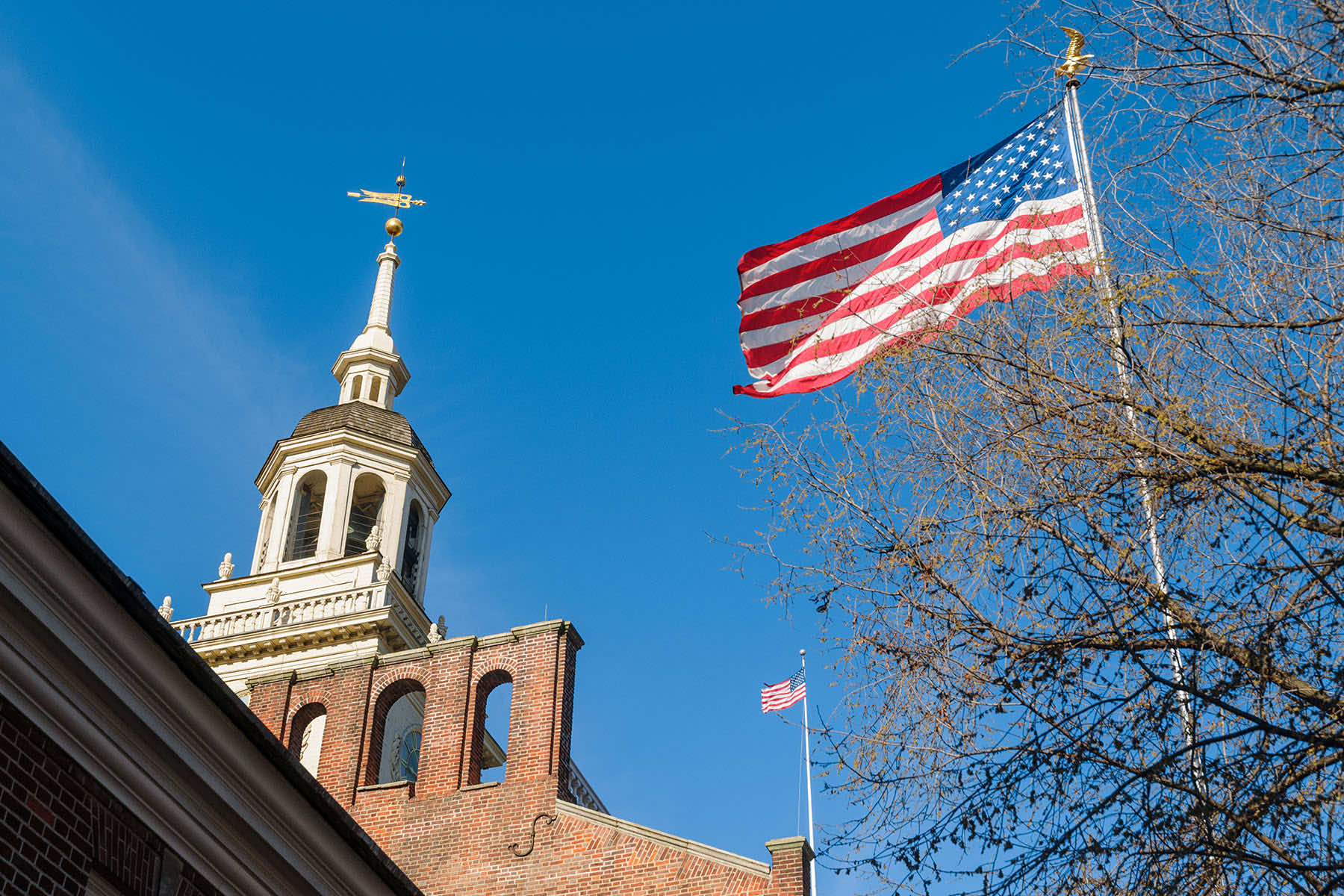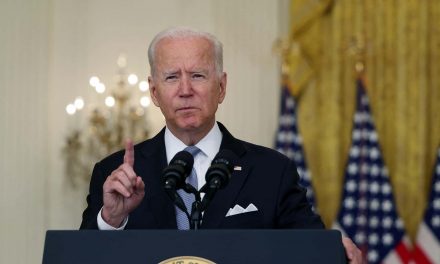
On July 2, 1776, the Second Continental Congress passed a “Resolution for Independence” declaring “That these United Colonies are, and of right ought to be, free and independent States, that they are absolved from all allegiance to the British Crown, and that all political connection between them and the State of Great Britain is, and ought to be, totally dissolved.”
Also known as the “Lee Resolution,” after Virginia delegate Richard Henry Lee, who had proposed it, the resolution was the final break between the king and the thirteen colonies on the North American continent that would later become the United States of America. The path to independence had been neither obvious nor easy.
In 1763, at the end of what was known in the colonies as the French and Indian War, there was little indication that the colonies were about to start their own nation. The war had brought an economic boom to the colonies, and with the French giving up control of land to the west, Euro-American colonists were giddy at the prospect of moving across the Appalachian Mountains. Impressed that the king had been willing to expend such effort to protect the colonies, they were proud of their identity as members of the British empire.
That enthusiasm soon waned. To guard against another expensive war between colonists and Indigenous Americans, the king’s ministers and Parliament prohibited colonists from crossing the Appalachians. Then, to replenish the treasury after the last war, they passed a number of revenue laws. In 1765 they enacted the Stamp Act, which placed a tax on printed material in the colonies, everything from legal documents and newspapers to playing cards.
The Stamp Act shocked colonists, who saw in it a central political struggle that had been going on in England for more than a century: could the king be checked by the people? Colonists were not directly represented in Parliament and believed they were losing their fundamental liberty as Englishmen to have a say in their government. They responded to the Stamp Act with widespread protests.
In 1766, Parliament repealed the Stamp Act but linked that repeal to the Declaratory Act, which claimed for Parliament “full power and authority to make laws and statutes…to bind the colonies and people of America … in all cases whatsoever.” This act echoed the 1719 Irish Declaratory Act, which asserted that Ireland was subordinate to the British king and Parliament. It also imposed new taxes.
As soon as news of the Declaratory Act and the new taxes reached Boston in 1767, the Massachusetts legislature circulated a letter to the other colonies standing firm on the right to equality in the British empire. Local groups boycotted taxed goods and broke into warehouses whose owners they thought were breaking the boycott. In 1768, British officials sent troops to Boston to restore order.
Events began to move faster and faster. In March 1770, British soldiers in Boston shot into a crowd of men and boys harassing them, killing five and wounding six others. Tensions calmed when Parliament in 1772 removed all but one of the new taxes — the tax on tea — but then, in May 1773, it tried to bail out the failing East India Company by giving it a monopoly on tea sales in the colonies. The result would be cheaper tea in the colonies, convincing people to buy it and thus establishing Parliament’s right to impose the tax.
Ships carrying the East India tea sailed for the colonies in fall 1773, but mass protests convinced the ships headed to every city but Boston to return to England. In Boston the royal governor was determined to land the cargo. On December 16, 1773, men dressed as Indigenous Americans boarded the Dartmouth, tied to a wharf in Boston Harbor, and tossed the tea overboard. Parliament promptly closed the port of Boston, strangling its economy.
In fall 1774, worried colonial delegates met as the First Continental Congress in Carpenters’ Hall in Philadelphia to figure out how to stand together against tyranny. In Massachusetts a provincial congress stockpiled weapons and supplies in Concord and called for towns to create companies of men who could be ready to fight on a minute’s notice.
British officials were determined to end the rebellion once and for all. They ordered General Thomas Gage to arrest Boston leaders Samuel Adams and John Hancock, who were rumored to be in Lexington, and to seize the supplies in Concord. On the night of April 18, 1775, the soldiers set out. The next morning, on the Lexington town green, the British regulars found several dozen minutemen waiting for them. The locals began to disperse when ordered to, but then a shot cracked through the darkness. The regulars opened fire. Eight locals were killed, another dozen wounded.
The regulars marched on to Concord, where they found that most of the supplies had been removed. Then, when they turned to march back to Boston, they found their retreat cut off by minutemen firing from behind boulders, trees, and farmhouses. Seventy-three regular soldiers were killed, another 174 were wounded, and 26 were missing. There were 96 colonial casualties: 49 killed, 41 wounded, and 5 missing.
Before disbanding the year before, the First Continental Congress had agreed to meet again if circumstances seemed to require it. After the events at Lexington and Concord, the delegates regrouped in Philadelphia in late spring 1775, down the street from Carpenters’ Hall in the Pennsylvania State House, a building that we now know as Independence Hall.
The Second Continental Congress agreed to pull the military units around Boston into a Continental Army and put George Washington of Virginia in charge of it. But delegates also wrote directly to the king, emphasizing that they were “your Majesty’s faithful subjects.”
They blamed the trouble between him and the colonies on “many of your Majesty’s Ministers,” who had “dealt out” “delusive presences, fruitless terrors, and unavailing severities” and forced the colonists to arm themselves in self-defense. They begged the king to use his power to restore harmony with the colonies. By the time the Olive Branch Petition made it to England in fall 1775, the king had already declared the colonies to be in rebellion.
In January 1776 a 47-page pamphlet, published in Philadelphia by newly-arrived immigrant Thomas Paine, provided the spark that inspired his new countrymen to make the leap from blaming the king’s ministers for their troubles to blaming the king himself. “In the following pages I offer nothing more than simple facts, plain arguments, and common sense,” Paine wrote.
Paine rejected the idea that any man could be born to rule others, and he ridiculed the idea that an island should try to govern a continent. “Where…is the King of America?” Paine asked in Common Sense. “I’ll tell you Friend…so far as we approve of monarchy…in America THE LAW IS KING. For as in absolute governments the King is law, so in free countries the law ought to be King; and there ought to be no other.
“A government of our own is our natural right: And when a man seriously reflects on the precariousness of human affairs, he will become convinced, that it is infinitely wiser and safer, to form a constitution of our own in a cool deliberate manner, while we have it in our power, than to trust such an interesting event to time and chance.
If we omit it now, some [dictator] may hereafter arise, who laying hold of popular disquietudes, may collect together the desperate and the discontented, and by assuming to themselves the powers of government, may sweep away the liberties of the continent like a deluge.”
“We have it in our power,” Paine wrote, “to begin the world over again.”
As Common Sense swept the colonies, people echoed Paine’s call for American independence. By April 1776, states were writing their own declarations of independence, and a Virginia convention asked the Second Continental Congress to consider declaring “the United Colonies free and independent States, absolved from all allegiance to, or dependence upon, the Crown or Parliament of Great Britain.” On June 7, Lee put the resolution forward. Four days later, the Congress appointed a committee to draft such a declaration.
Congress left time for reluctant delegates to come around to the resolution, so it was not until July 2 that the measure passed. “The Second Day of July 1776, will be the most memorable Epocha, in the History of America,” Massachusetts delegate John Adams wrote to his wife, Abigail, on July 3.
While we celebrate the signing of the final form of the declaration two days later, the adoption of the Lee Resolution marked the delegates’ ultimate conviction that a nation should rest not on the arbitrary rule of a single man and his hand-picked advisors, but on the rule of law.
* * *
And on July 4, 1776, the Second Continental Congress adopted the Declaration of Independence, declaring: “We hold these truths to be self-evident, that all men are created equal, that they are endowed by their Creator with certain unalienable rights, that among these are Life, Liberty and the Pursuit of Happiness.”
For all the fact that the congressmen got around the sticky little problem of Black and Indigenous enslavement by defining “men” as “White men,” and for all that it never crossed their minds that women might also have rights, the Declaration of Independence was an astonishingly radical document.
In a world that had been dominated by a small class of rich men for so long that most people simply accepted that they should be forever tied to their status at birth, a group of upstart legislators on the edges of a continent declared that no man was born better than any other.
America was founded on the radical idea that all men are created equal.
What the founders declared self-evident was not so clear eighty-seven years later, when southern White men went to war to reshape America into a nation in which African Americans, Indigenous Americans, Chinese, and Irish were locked into a lower status than Whites. In that era, equality had become a “proposition,” rather than “self-evident.”
“Four score and seven years ago,” Abraham Lincoln reminded Americans, “our fathers brought forth on this continent, a new nation, conceived in Liberty, and dedicated to the proposition that all men are created equal.” In 1863, Lincoln explained, the Civil War was “testing whether that nation, or any nation so conceived and so dedicated, can long endure.”
It did, of course. The Confederate rebellion failed. The United States endured, and Americans began to expand the idea that all men are created equal to include Black men, men of color, and eventually women.
But just as in the 1850s, we are now, once again, facing a rebellion against our founding principle, as a few people seek to reshape America into a nation in which certain people are better than others.
The men who signed the Declaration of Independence on July 4, 1776, pledged their “Lives, [their] Fortunes and [their] sacred Honor” to defend the idea of human equality. Ever since then, Americans have sacrificed their own fortunes, honor, and even their lives, for that principle.
Lincoln reminded Civil War Americans of those sacrifices when he urged the people of his era to “take increased devotion to that cause for which they gave the last full measure of devotion — that we here highly resolve that these dead shall not have died in vain — that this nation, under God, shall have a new birth of freedom — and that government of the people, by the people, for the people, shall not perish from the earth.”
Words to live by in 2024.
Jeffrey M. Frank (AP) and Zack Frank (AP)
Letters from an Аmerican is a daily email newsletter written by Heather Cox Richardson, about the history behind today’s politics















